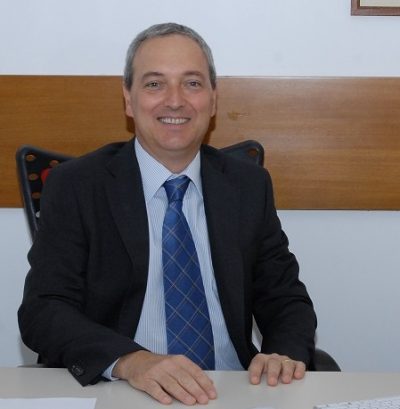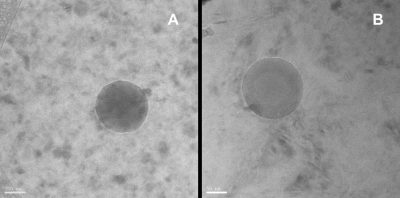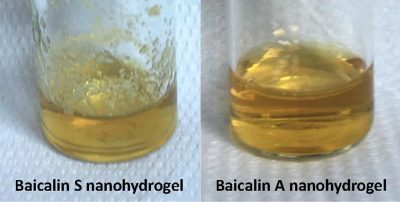
In his laboratory at the Sapienza University of Rome (Italy), Professor Pietro Matricardi and his group develop new materials based on polysaccharides.
These natural polymers that belong to the carbohydrate family, are long chains of simple sugars, the monosaccharides, and are abundantly present in plants and animals. With them, Professor Matricardi elaborates several types of hydrogels (gels with high water content) that can be introduced into the human body without affecting its normal functions. Among the main applications of these materials are drug delivery systems, in which a particular drug is stored in the hydrogel and released in a controlled manner within the patient’s body.
At the XVII B-MRS Meeting, Professor Matricardi will deliver a plenary lecture about this diversity of polysaccharides hydrogels, their preparation and their pharmaceutical applications.
A graduate of the Sapienza University of Rome, where he obtained his MSc (1989) and PhD (1993), Pietro Matricardi returned to his alma mater in 2004, as Assistant Professor at the Department of Drug Chemistry and Technologies, after some professional experience in companies, including in the pharmaceutical segment. At present he is Associate Professor at Sapienza.
Matricardi is the author of more than 80 articles in peer-reviewed international journals, editor of a book on polysaccharide hydrogels and author of some book chapters. His scientific production counts more than 2,700 citations. He is also president of the Italian chapter of the Controlled Release Society.
See our mini-interview with this Italian scientist.
B-MRS Newsletter: – We would like to know a little more about polysaccharide hydrogel drug delivery systems. What are the characteristics of these drug carriers? Which are the advantages of them over other systems made with other materials? What kind of control do the polysaccharide hydrogels make possible on the release of the drug? Please comment very briefly on these topics.

Pietro Matricardi: – The main features of polysaccharide hydrogels are their general biocompatibility, due to the natural origin of the polymer matrices, and their high water content. The mechanical properties stemming from the combination of the polymer architecture and the water environment, lead to matrices that are highly tolerated by the human body. Moreover, the wide range of polymers available and the great number of tunable parameters to adjust the properties of the matrices, is another very important aspect in tailoring the hydrogels functions. Finally, embedding drugs within these hydrogels leads to drug delivery systems that can be exploited in many pharmaceutical and biomedical applications, already present on the market from a long time, ranging from topical to the internal ones. Just to mention, from hydrogels for wound healing or dermatitis treatment or hyaluronic acid for joints visco-supplementation, aesthetic surgery or tissue regeneration. More recently, polysaccharide nanohydrogels, i.e. hydrogels in the nanoscale, are gaining a great attention for their properties as “intelligent carrier” and some products are almost ready for the market; but these drug delivery systems are just at the beginning of their life.
B-MRS Newsletter: – We want to know more about your work. Please choose two articles / patents / products of your own (your favorites) and describe them briefly.

Pietro Matricardi: – Our group focused the research on polysaccharide nanohydrogels since few years. One of the main result is condensed in two patents in which we describe how it is possible to obtain polysaccharide nanohydrogels, ready for a pharmaceutical formulation, by using a standard autoclaving cycle. In such a way, starting from the drug and the polymer both suspended in water, it is possible to obtain, in one shot, sterile nanohydrogels with the drug embedded inside.
- WO2014199318 (A2) ― 2014-12-18 MC De Rugeriis, E. Montanari, C. Di Meo, P. Matricardi – METHOD FOR PREPARING NANOHYDROGELS.
- WO2014199319 (A2) 2014-12-18 G. D’Arrigo, C. Cencetti, C. Di Meo, P. Matricardi – METHOD FOR THE TREATMENT OF NANOHYDROGELS.
Another important work was developed in collaboration with Prof. Torchlin of the Northeastern University, Boston, MA, USA. In that work we explored the possibility to use the nanohydrogels for a dual drug delivery. Specifically, we embedded an anticancer drug (paclitaxel) in a gellan-anti-inflammatory (prednisolone) nanohydrogels, obtaining a synergistic effect of the two drugs in killing cancer cells. This work received the “Best paper award in EJPB 2014”.
- Giorgia D’Arrigo, Gemma Navarro, Chiara Di Meo, Pietro Matricardi, Vladimir Torchilin. “Gellan gum nanohydrogel containing anti-inflammatory and anti-cancer drugs: a multi-drug delivery system for a combination therapy in cancer treatment”. European Journal of Pharmaceutics and Biopharmaceutics, (2014) 87 (1) 208-216. Doi: 0.1016/j.ejpb.2013.11.001.

biomedis
Can you elaborate on the applications of polysaccharide hydrogels in drug delivery systems, specifically how they work and the advantages they offer over other materials for drug delivery? go check our Journals